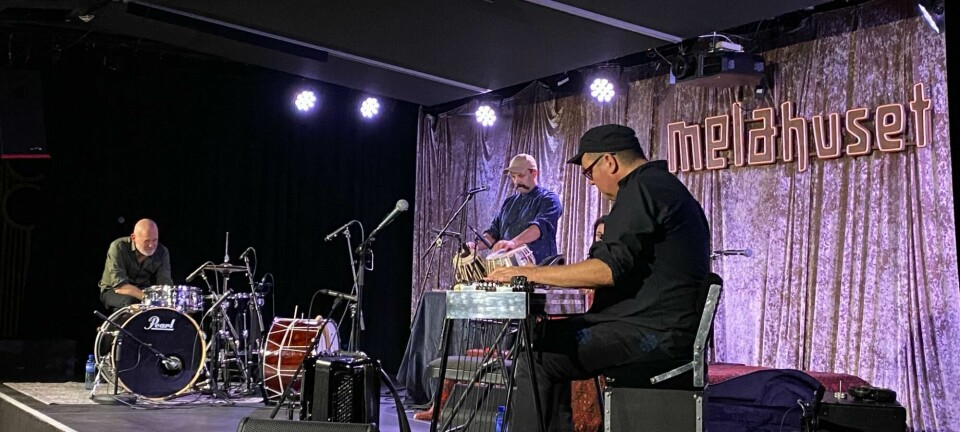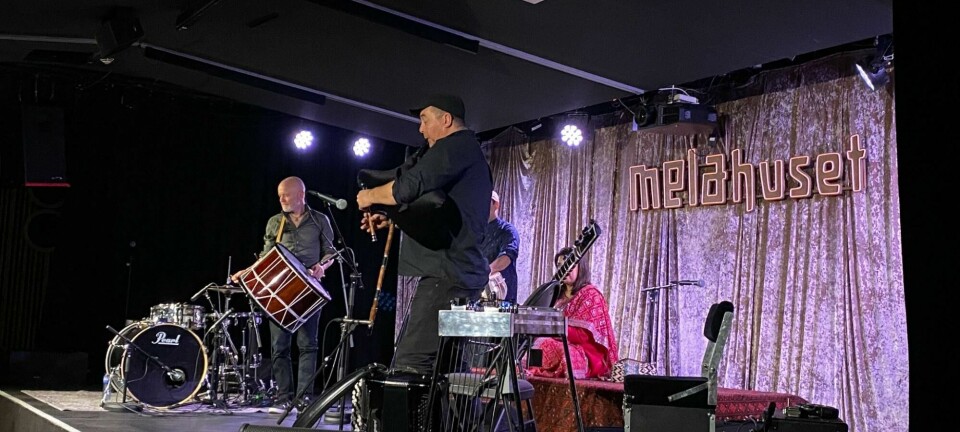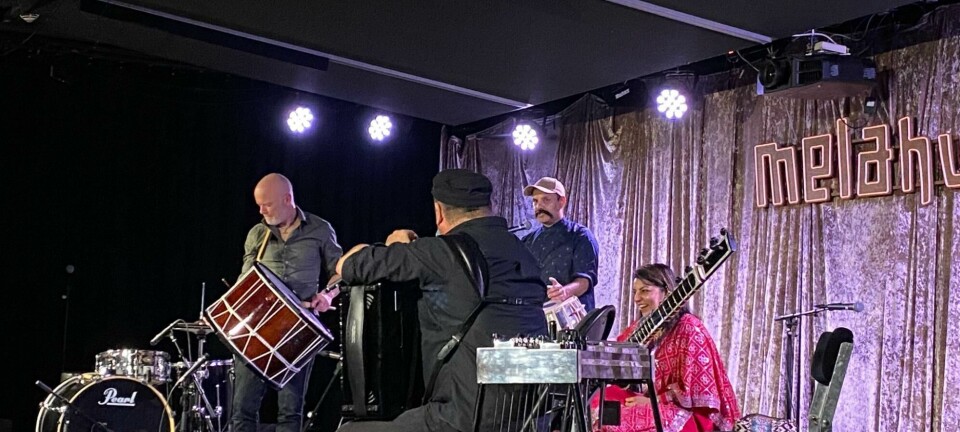#Events
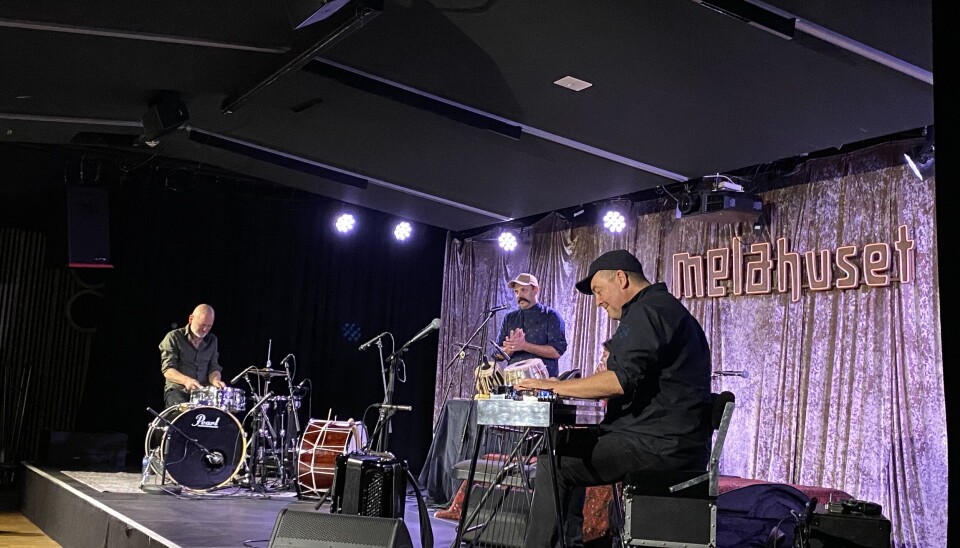
A Night of Indian x Balkan Fusion
Oslo kulturnatt 2023 highlight
When our editorial team discussed covering Oslo Cultural Night and the night of Indian x Balkan fusion was on the agenda, it felt like the assignment and I were an uncomplicated pairing, considering a friend and I had stumbled upon the event just days before in hopes of making the first work-free Friday night productive. And boy was it worthwhile.
Melahuset: Merging Cultures & Art
I was grateful to have had the chance to cover the event, having never heard of Melahuset or experience in the fusion music scene in Norway. Established by cultural activist Khalid Salimi in 2016, the Melahuset is a stage for multicultural art and cultural expression. Melahuset prides itself on its ability to organise and host events that reflect the diversity in society and put a particular spotlight on artists and cultural expressions from the countries that are well represented in Norway due to immigration. Previously having hosted poetry evenings, conversations on revolutions and resistance, musical performances celebrating Black History Month, and cultural tributes, Melahuset works to create a welcoming space for these unique experiences that reach all types of audiences.
Oslo kulturnatt x Melahuset: A Mix of Different Cultural Music Styles and Traditions
As we entered Melahuset, a venue tucked away behind the noise of Oslo Sentrum, slightly too late to find two free seats, we left a trail behind us as we lugged around our umbrellas, which were completely saturated with the rainwater that had collected throughout the night. I had quite absentmindedly mistaken the faint background sounds of sitar and tabla that faded into the background of light chatter and laughter for the start of the performance. I realise that the performance was quite on the contrary, animated and at the forefront of the audience’s attention, demanding us to meditate on each and every note and sit with the intensity of those emotions throughout the concert.
We frantically manoeuvred around and searched between the crowd for an open space where we might be able to hover for the night. Luckily, we managed to chat to a kind member of staff, who offered to bring us two seats right by the side of the stage, which added a layer of intimacy to the setting. Slowly, as anticipation started to grow, just like us, people found themselves without seats, and resorted to sitting on the floor just under the nose of the musicians:
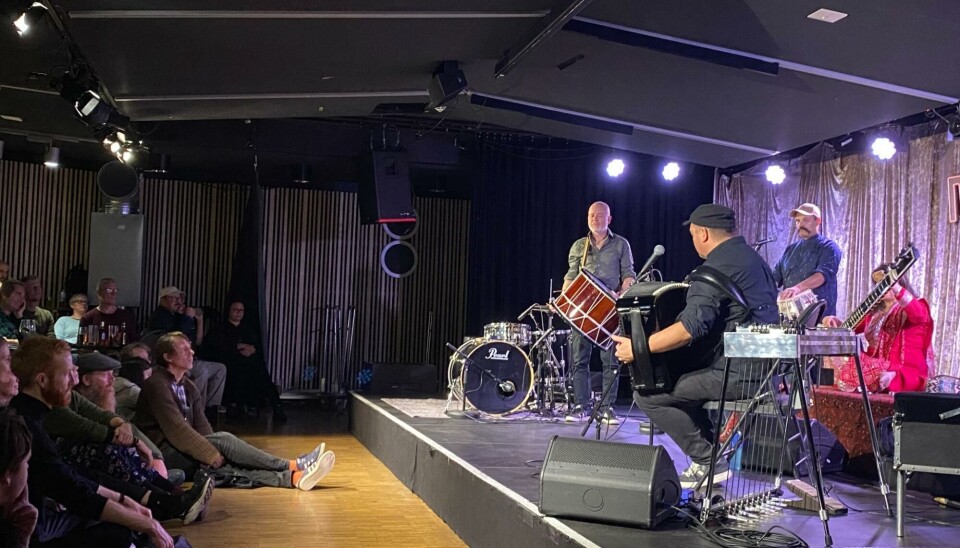
The performers and their performance
A total of four musicians were a part of the Oslo kulturnatt 2023 at Melahuset:
- Jarle Vespestad, a versatile and talented jazz drummer, known for his creative, expressive and listening style.
- Stian Carstensen, a multi-instrumentalist and Norwegian maverick who has mastered accordion, banjo, guitar and pedal steel to name a few, and known for mixing improvisation with different musical traditions such as European art music and Bulgarian folk
- Jai Shankar, an incredibly skilled tabla virtuoso who has played, toured and competed since a young age, having collaborated with a number of jazz and folk musicians and launched his own musical projects.
- Rohini Sahajpal, a gifted, renowned Sitar-player and apprentice of internationally acclaimed flautist of India in the Hindustani classical tradition, Pandit Hariprasad Chaurasia.
As the dim hues of purple spotlighted the musicians on stage, their entrance created a ripple of silence across the room. Stian addressed the audience, cutting the tension with what seemed like a joke, judging by the waves of laughter in the room (not judging by our poor Norwegian skills). With that, Rohini eased the audience into a gentle classical melody whilst Stian, Jai and Jarle nodded in affirmation before gradually joining in with the accordion, tabla and what looked like a Bulgarian percussion instrument called “Davul.”
The performance was dynamic throughout. Jarle would move from the Davul to a Western drum set, complementing the vocal percussiveness of Jai’s tabla whilst Stian, in a passionate display of his musical ability, would often alternate between the accordion, the pedal steel guitar and the kaba guida, a type of bagpipe that is a distinctive symbol of Bulgarian folk music.
The moments of pushing and pulling, giving and taking and the moments of compromise and challenge played out as intricate and complex melodies and rhythms that were unpredictable, each one evoking a different response from the audience: excitement, calmness, apprehension. There was a call-and-response interaction between Jai and Stian, where they would perform rhythmic phrases that left the audience unable to clap in time, not for lack of trying, but it kept us engaged.
Aftermath of the Performance: A Chat With Rohini Sahajpal
I then had the pleasure of speaking to the immensely talented Rohini Sahajpal, and we talked about music as a connection to culture, family and the soul. Rohini told me about what it was like growing up with a Punjabi background in Norway. “We do Indian classical music but we didn’t have musical shows we could go to or a musical atmosphere as such to learn from back then. We had to create a musical atmosphere. Nobody else was playing sitar. I was learning from my father, [and mentor], at home since the age of 5.” She explained that growing up, there wasn’t a market for Indian classical music, so she and her brother, Jai Shankar, pursued a profession in medicine. At the same time, with the sitar being a new instrument in the Norwegian music scene, she was encouraged to pursue her interests further by those around her and Norwegian society.
“Now, as we are growing and learning and practising, we get good opportunities to learn with and play with these great musicians…this is the platform,” she says. Only performing together once before at the Melafestivalen in 2021, Rohini tells me that “everything [the audience saw and heard that night] was happening in the moment, on the spot”, improvising through body language, eye contact and building off each other’s musicality. “I have the sitar, which can be a limited instrument, I just have to follow with the intensity, so we don’t know what to expect … this is amazingly fun,” says Rohini. “Stian is a different level of musical genius and is incredibly rhythmical. He always challenges me – in the best way, it is stimulating for me.”
Improvisation, in its very essence and meaning, is about creation and what she describes as a “brainy game” of being able to use the medium of music to communicate with an audience and develop a language that people understand and can connect to. She tells us that to be able to improvise so freely and expressively also demands practice, failure and growth, which is why it’s so important to put yourself out there to practise what you love and embrace your mistakes. Throughout her musical journey, Rohini explains that she has always aimed for depth into Indian music and knowledge has been the goal. “When you understand one thing, there are 3 more things to understand…but I am hungry for music,” she says.
Out of curiosity, I asked Rohini about how the components of Indian classical music operate in comparison to Western music styles and whether this affected how the fusion was arranged. She explained to me quite simply that Western music operates vertically with different layers and Eastern music operates horizontally along one note, but like a fusion of colours that become one when mixed together, fusion is about carrying your identity with you whilst finding a middle ground that reflects yourself and your society–perhaps an apt metaphor for all my diaspora kids out there!
Having previously collaborated with artists to create fusion sounds at Melahuset, before I missed the chance, I had to ask Rohini about which fusion collaborations she would most like to be involved in in the future and she mentioned everything from African music genres to Classical Western and South Indian music styles. I, for one, am excited to see what is in store in the near future! It was incredibly rewarding being able to chat to Rohini, who was so generous with her time and insight, as our conversation which spanned across a couple of hours led us to discussing the element of spirituality in music and how sound comes from the soul.
